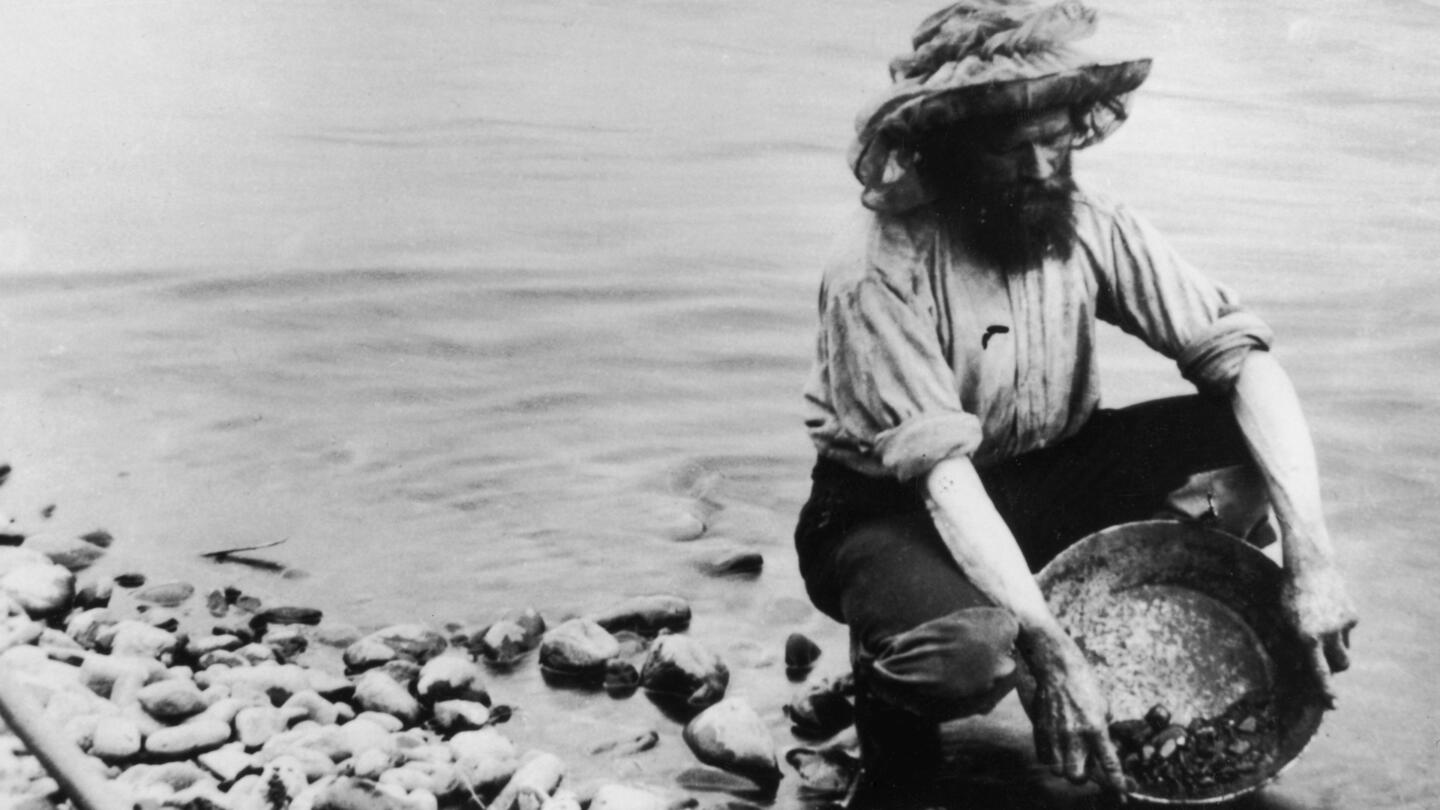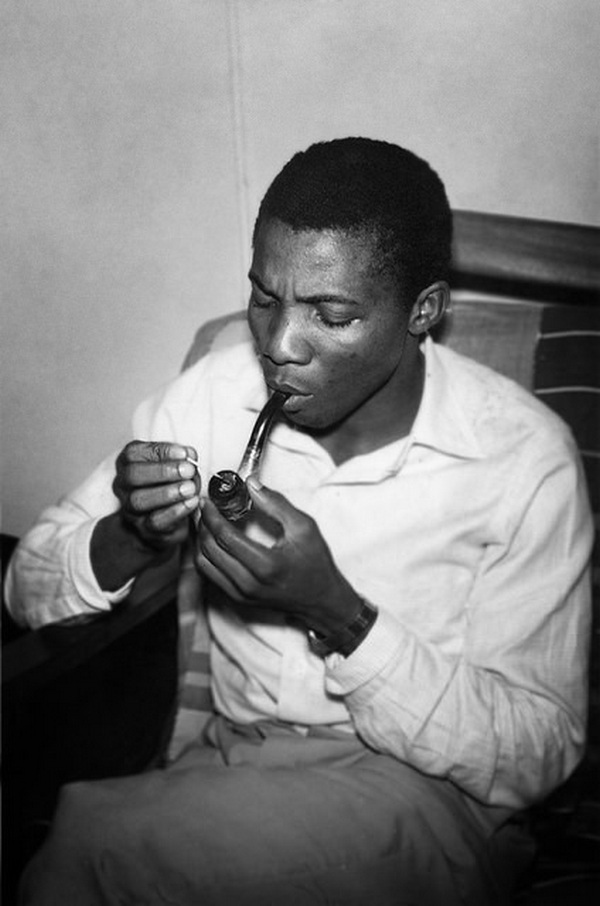
Gold discovered in the Yukon
While salmon fishing near the Klondike River in Canada’s Yukon Territory on August 16, 1896, George Carmack reportedly spots nuggets of gold in a creek bed. His lucky discovery sparks the last great gold rush in the American West.
Hoping to cash in on reported gold strikes in Alaska, Carmack had traveled there from California in 1881. After running into a dead end, he headed north into the isolated Yukon Territory, just across the Canadian border. In 1896, another prospector, Robert Henderson, told Carmack of finding gold in a tributary of the Klondike River. Carmack headed to the region with two Native American companions, known as Skookum Jim and Tagish Charlie. On August 16, while camping near Rabbit Creek, Carmack reportedly spotted a nugget of gold jutting out from the creek bank. His two companions later agreed that Skookum Jim–Carmack’s brother-in-law—actually made the discovery.
Regardless of who spotted the gold first, the three men soon found that the rock near the creek bed was thick with gold deposits. They staked their claim the following day. News of the gold strike spread fast across Canada and the United States, and over the next two years, as many as 50,000 would-be miners arrived in the region. Rabbit Creek was renamed Bonanza, and even more gold was discovered in another Klondike tributary, dubbed Eldorado.
“Klondike Fever” reached its height in the United States in mid-July 1897 when two steamships arrived from the Yukon in San Francisco and Seattle, bringing a total of more than two tons of gold. Thousands of eager young men bought elaborate “Yukon outfits” (kits assembled by clever marketers containing food, clothing, tools and other necessary equipment) and set out on their way north. Few of these would find what they were looking for, as most of the land in the region had already been claimed. One of the unsuccessful gold-seekers was 21-year-old Jack London, whose short stories based on his Klondike experience became his first book, The Son of the Wolf (1900).
For his part, Carmack became rich off his discovery, leaving the Yukon with $1 million worth of gold. Many individual gold miners in the Klondike eventually sold their stakes to mining companies, who had the resources and machinery to access more gold. Large-scale gold mining in the Yukon Territory didn’t end until 1966, and by that time the region had yielded some $250 million in gold. Today, some 200 small gold mines still operate in the region.

WAR OF 1812
1812
U.S. surrenders Fort Detroit to the British
During the War of 1812, American General William Hull surrenders Fort Detroit and his army to the British without a fight. Hull, a 59-year-old veteran of the American Revolution, had lost hope of defending the settlement after seeing the large English and Indian force gathering outside Detroit’s walls. The general was also preoccupied with the presence of his daughter and grandchildren inside the fort.
ART, LITERATURE, AND FILM HISTORY
1977
Elvis Presley dies
Popular music icon Elvis Presley dies in Memphis, Tennessee. He was 42. The death of the “King of Rock and Roll” brought legions of mourning fans to Graceland, his mansion in Memphis. Doctors said he died of a heart attack, likely brought on by his addiction to prescription barbiturates.

SPORTS
1948
Babe Ruth dies
On August 16, 1948, baseball legend George Herman “Babe” Ruth dies from cancer in New York City. For two days following, his body lay in state at the main entrance to Yankee Stadium, and tens of thousands of people stood in line to pay their last respects.

CRIME
1984
Los Angeles jury clears John Z. DeLorean of drug charges
After close to 30 hours of deliberation, a jury of six men and six women unanimously acquits the former automaker John Z. DeLorean of eight counts of drug trafficking in Los Angeles, California, on August 16, 1984. A Detroit native and the son of an autoworker.

WORLD WAR II
1945
Senior U.S. POW is released
On August 16, 1945, Lt. Gen. Jonathan Wainwright, (captured by the Japanese on the island of Corregidor, in the Philippines), is freed by Russian forces from a POW camp in Manchuria, China. When President Franklin Roosevelt transferred Gen. Douglas MacArthur from his command in the Philippines to Australia in March 1942, Maj. Gen. Wainwright, until then under MacArthur’s command, was promoted to temporary lieutenant general and given command of all Philippine forces.

VIETNAM WAR
1967
Gulf of Tonkin Resolution is challenged in Senate
On August 16, 1967, President Johnson’s broad interpretation of the Gulf of Tonkin Resolution is attacked in the Senate Foreign Relations Subcommittee by the Chairman, Senator William Fulbright of Arkansas, who feels that Johnson has no mandate to conduct the war on the present days.

SPORTS
1920
Batter sustains fatal injury at plate
On August 16, 1920, Cleveland Indians shortstop Ray Chapman is struck in the temple by a ball pitched by Carl Mays of the New York Yankees. He died 12 hours later. This was the first and only death to occur as the result of a pitched ball in major league history.
U.S. PRESIDENTS
1841
President Tyler is burned in effigy outside White House
President John Tyler vetoes a second attempt by Congress to re-establish the Bank of the United States. In response, angry supporters of the bank gathered outside the White House and burned an effigy of Tyler.

ART, LITERATURE, AND FILM HISTORY
1974
The Ramones play their first public gig at CBGB in downtown Manhattan
Five years to the day after half a million rain-soaked hippies grooved and swayed to the psychedelic sounds of the Grateful Dead at Woodstock, four young men from Forest Hills, Queens, took to the stage of an East Village dive bar in jeans, motorcycle jackets and Converse high-tops to launch a two-minute sonic attack on everything those 60s icons stood for.

1980S
1987
Plane crashes into highway
A plane crash at Detroit Metropolitan Airport in Michigan kills 156 people on August 16, 1987. A four-year-old girl was the sole survivor of the accident, which was caused by pilot error. Northwest Flight 255 was headed to California with a stopover in Phoenix when it pulled away.
TODAY IN NIGERIA HISTORY

Alaba Mosadioluwa Joseph was born today 16th of August 1945

1932 Christopher Ifekandu Okigbo, a poet, was born in Ojoto, Eastern Nigeria. He died fighting for Biagra in the Nigerian civil war.

1951 President Umaru Musa Yar'Adua (President and 13th Head of State 2007-2010) was born.


Comments
Post a Comment